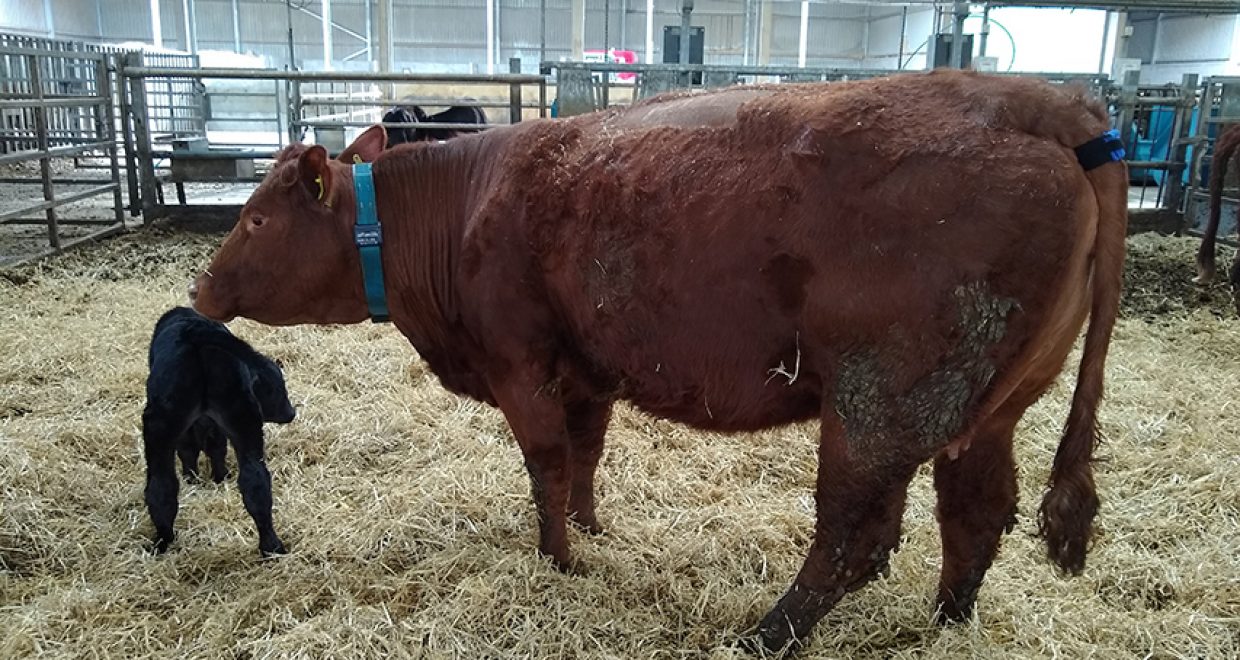Sensors and machine learning to predict calving
The animal article of the month for June is “Using animal‐mounted sensor technology and machine learning to predict time-to-calving in beef and dairy cows” by G. A. Miller et al.
Dairy and beef cattle herd sizes have been steadily increasing around the world. If the number of stockpeople does not increase at the same rate, it follows that there is less time available for the stockperson to check on the health and welfare of individual animals. If cows experience difficulty giving birth it can lead to a number of health and welfare problems which have a knock-on effect to the productivity of both the cow and her calf. In the most severe cases this can lead to the cow become infertile or death of the calf. It is therefore important to identify these cows at an early stage during the birthing process to ensure that they receive timely assistance.
At the early stages of the calving process some of the cow’s behaviours change. For example, their level of activity increases, they eat and ruminate less, and they start to lift their tails up more frequently. These behaviours can be monitored in real time by mounting simple accelerometer devices (devises which record the direct and speed of movement) on the animal.
The aim of this study was to determine if integrating data-streams from accelerometers mounted at two locations on cows could be used to develop machine learning algorithms to predict when the calf would be born. Machine learning is a branch of artificial intelligence, it gives computer systems the ability to ‘learn’ from patterns in data and make inferences based on these patterns.

In this study we placed accelerometers on the tails and necks of dairy and beef cows who were close to calving to monitor how often they raised their tails, their activity levels and how much time they spent eating and ruminating up to the point they gave birth. The collected behavioural data, along with some simple information about each cow (e.g. age, number of previous pregnancies, breed) was used to build a machine learning algorithm which could predict when a cow should be expected to calf.
The algorithm was best able to predict when a cow would calf at two hours before the cow gave birth. The length of time a cow spent with its tail raised each hour was the best behavioural predictor. Adding other monitored behaviours into the algorithm slightly improved the algorithm’s prediction.
Complex machine learning algorithms have the potential to be developed further and not just alert stockpeople to cows who are close to calving, but to cows who are experiencing difficulty birthing, at an early stage. This means it has a distinct advantage over more simple algorithms that can detect calving simply by alerting the stockperson when the cow’s tail is raised for more than a threshold length of time.
The animal article of the month for June “Using animal‐mounted sensor technology and machine learning to predict time-to-calving in beef and dairy cows” is available Open Access.
Authors: G. A. Miller, M. Mitchell, Z. E. Barker, K. Giebel, E. A. Codling, J. R. Amory, C. Michie, C. Davison, C. Tachtatzis, I. Andonovic and C.-A. Duthie
The animal Article of the Month is selected by the Editor-in-Chief and is freely available for one month. View the recent selections






